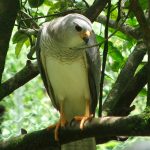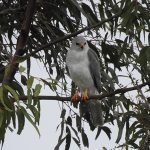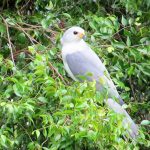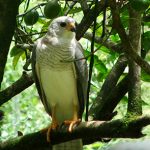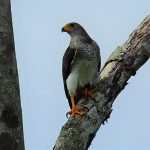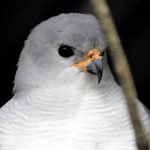GREY GOSHAWK
The Grey Goshawk is a medium-sized bird of prey that belongs to the family Accipitridae. It is found in various parts of Australia, New Guinea, and nearby islands. The Grey Goshawk is known for its striking appearance and hunting prowess.
The Grey Goshawk displays sexual dimorphism, meaning males and females have different plumage patterns. Adult males are mostly white below and light grey above, with red eyes and grey legs. Adult females are larger and have a dark grey upper body, pale grey underparts with fine barring, and yellow eyes.
Grey Goshawks inhabit a range of environments, including forests, woodlands, rainforests, and even urban areas. They are often seen perched in trees, scanning for prey.
Their diet primarily consists of birds, but they may also consume small mammals, insects, and reptiles. They are skilled hunters, using their agility and speed to surprise their prey.
Grey Goshawks are known for their stealthy hunting tactics. They often ambush their prey from a hidden perch, swooping down to catch them in mid-air. They are agile flyers, able to maneuver through dense vegetation to chase down prey.
During the breeding season, Grey Goshawks build nests in the forks of trees using sticks and other materials. The female typically lays 2-3 eggs, which she incubates for about a month. The chicks fledge after several weeks and gradually learn to hunt from their parents.
Habitat loss and fragmentation, as well as other human activities, can impact their populations locally.
The Grey Goshawk belongs to the genus Accipiter, which includes other birds of prey known as hawks. Accipiters are characterized by their relatively short wings and long tails, adaptations that aid them in maneuvering through forests and capturing agile prey.
Overall, the Grey Goshawk is a fascinating bird with its unique appearance and hunting strategies. It plays an important role in its ecosystem by helping to control populations of other bird species and maintaining a balance in the food chain.

